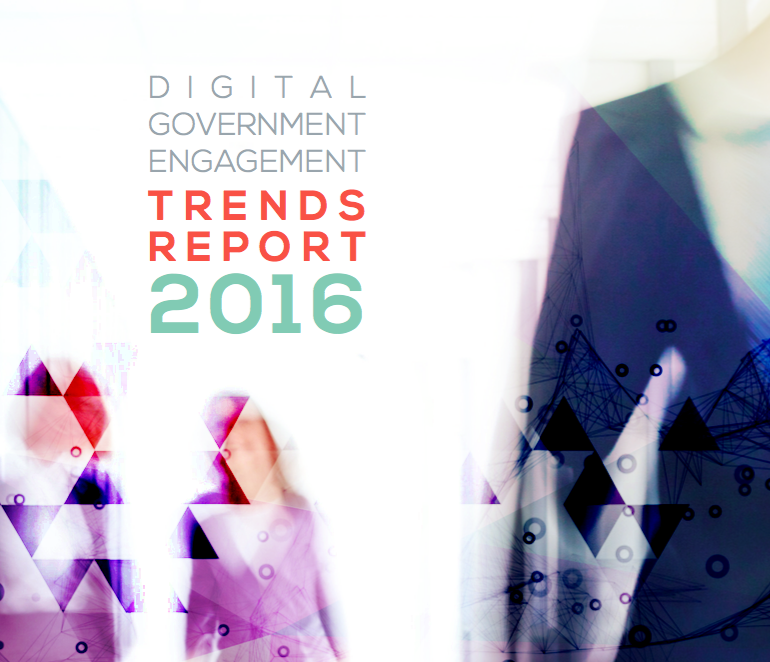Amidst the enticing aroma of bagels, government and industry employees gathered at GovDelivery on Tuesday morning for a panel on elevating the citizen experience in digital government. The foundation of the panel was a report that GovDelivery published recently on trends in digital government engagement.
The panel consisted of three current and former government employees who work to improve their organization’s digital citizen engagement—Melissa Yu from the Department of Transportation; Joanne Elder at the Food and Drug Administration; and Ori Hoffer, a digital engagement strategist for GovDelivery, who before joining GovDelivery worked with the General Services Administration as a communications manager and social media strategist.
The event began with an overview of GovDelivery’s report, which identifies current challenges and trends that digital government faces. Based on this information, the report established four trends that organizations can follow to elevate digital communications.
- First is to improve the citizen experience. Understand what users want and needs and align your strategy to match the ideal citizen journey. Reach more citizens in new ways to increase engagement, and keep track of customer satisfaction to know what is working and what is not.
- The second trend is to put advanced communications to work. Examples include making full use of marketing automation, focusing on dynamic segmentation and automatic personalization, and trying automatic A/B testing.
- The third trend is to unlock more from open data. Build a data community by increasing access and emphasizing how the data can be used in effective ways, and ensure that available data can be easily consumed through visualization.
- The fourth trend is to provide ongoing learning opportunities. Fill training gaps as an increasing number of government employees retire and keep up with the changing technology and innovation with regular learning opportunities.
Following a review of the trends, Yu talked about her team’s work with A/B testing with their weekly newsletters and social media posts. They have experimented with different types of subject lines for their emailed newsletters, discovering that headlines with an element of “intrigue” produced the highest open rate. They have also worked to optimize their newsletter for mobile access and experimented with text messaging subscription service during a conference. During the week of the conference, there was a significant uptick in new subscribers, revealing the potential of text messaging.
Discussing his time at GSA and 18F, Hoffer included examples of how his organization worked to emphasize a user-focused experience by identifying targeted audiences and their needs. When the Bureau of Land Management developed the Every Kid In a Park program and needed a website, 18F turned to the website’s intended audience: 4th graders. In talking to the students, they realized that an emphasis on social media was unnecessary, and they reevaluated creative decisions, replacing images of frightening forests with welcoming fields.
At the FDA, Elder has used Google AdWords to reach consumers in a targeted way with measurable results. In one example, she was able to share the risks of tattoos and tanning by reaching women aged 18-24 through effective ad placements on sites that that demographic frequented. For a project about genetically engineered salmon, she used search data to see what terms people were using to look up the topic and was able to connect the language that the consumers used to the official terminology employed by the FDA. Through this, she discovered that more people searched “frankenfish” than “genetically engineered salmon.”
Key takeaways from the panel include the importance of knowing your audience and speaking their language in order to more easily reach and engage them. In addition, all three panelists answered a question about how to get leadership buy-in from management for digital communications strategies. Answers highlighted the importance of measuring communications and citizen engagement in order to have concrete data to show success to leadership. The data should be visualized so it is easily consumed and should tell a story. In other words, make sure that the metrics have a context, so management knows why the data is significant to their interests.
At the end of the session, each panelist was asked what they thought was the biggest trend from 2015 that would inform how they approach 2016. Yu said her team would focus on concrete metrics and mobile optimization, as well as doing a deep dive to find target audiences. Elder said she would look at shifting the perspective from sharing what the FDA wanted people to know to looking at what people wanted to know and providing it to them when they look for it. Hoffer mentioned he wants to focus on shifting communications and engagement to a user-focused design.
As citizen expectations rise and the population becomes increasingly mobile, digital engagement needs to change as well. GovDelivery’s report and this panel provide ways of understanding trends for 2016 and how to incorporate them in your agency or organization.
Download the report here for more information.
And if you missed out on this great event, never fear! Join us for the next one in the GovDelivery Breakfast Series, Inspiring Employee and Citizen Engagement Through Learning Experiences. It will be at 8:30 AM on Wednesday, February 24, at the GovDelivery office. Register here.





I most excited to see the marketing and communication trends from private sector (automation, segmentation, targeted outreach) as you describe in #2 above make its way to the Public Sector.